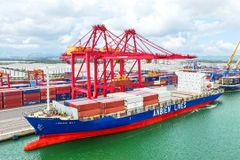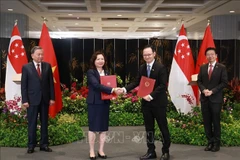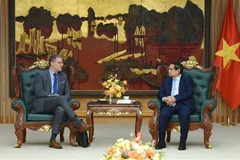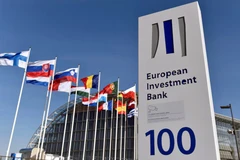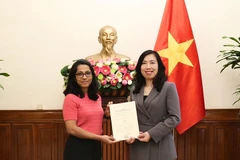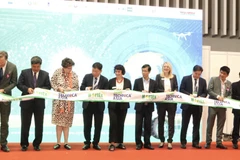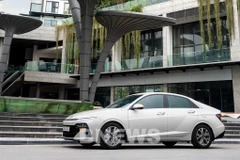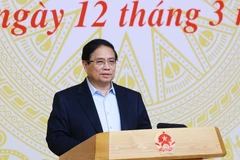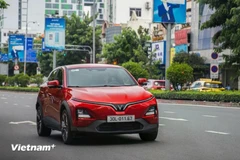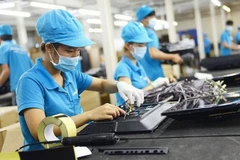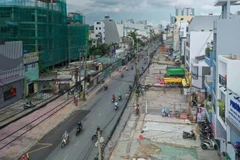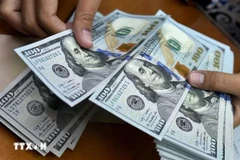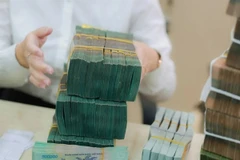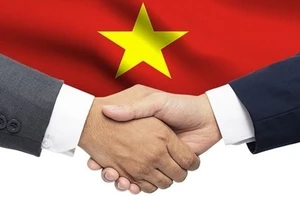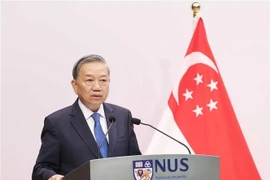 Demand for industrial land and ready-built factories is forecast to increase significantly this year, as investors can travel freely to Vietnam. (Photo: baochinhphu.vn)
Demand for industrial land and ready-built factories is forecast to increase significantly this year, as investors can travel freely to Vietnam. (Photo: baochinhphu.vn) On 15 March 2022, the Vietnamese Government allowed citizens of 13 countries,including Germany, the Republic of Korea, Japan, and France, to travel to Vietnamfor 15 days without a visa.
“This is great news for the country’s industrial sector,” John Campbell,Associate Director, Head of Industrial Services at Savills Vietnam said.
“Vietnam’s border reopening is important in strengthening the confidence ofinternational businesses and investors and is promising for the industrialsector,” he said, adding that in 2022, several prominent businesses had alreadyinvested in factories and expanded production in the country.
The industrial park market has been active with investment deals worth billionsof dollars in recent months, he pointed out. For example, at the end ofDecember 2021, Gaw NP Industrial broke ground on a ready-built factory projectat the 16ha GNP Yen Binh 2 Industrial Centre. At the end of February, KCN Vietnamheld a groundbreaking ceremony for a 13.4ha premium industrial facility in PhuAn Thạnh Industrial Park, Long An province.
“The market has sprung into action since the start of the year,” John said.
In February, LOGOS Vietnam Logistics Venture and Manulife Investment Managementestablished a joint venture partnership to acquire a 116,000sq.m, modernbuilt-to-suit logistics factory valued at more than 80 million USD.
CapitaLand Development signed a memorandum of understanding to invest 1 billionUSD in Bac Giang and will develop its first industrial park, logistics park anda township in the country.
BW Industrial Development JSC acquired 74,000sq.m of land in Bac Tien PhongIndustrial Zone, developed by DEEP C Industrial Zones.
“Coupled with an encouraging reopening plan, the Government’s avowed supportfor foreign investors and the sheer resilience and adaptability of localenterprises are promising. It paints a reassuring picture that not only willthe country recover but is likely to come back stronger than ever,” hestressed.
John said that the Vietnamese economy was forecast to grow beyond expectationin 2022, as domestic demand rebounded and FDI inflows remained stable, addingthat business conditions also improved over the past five months following thedisruption caused by the Delta wave of COVID in 2021.
He cited statistics of IHS Markit that the Vietnam’s PMI reached 54.3 inFebruary, increasing from 53.7 in January, demonstrating that the manufacturingsector was in recovery mode with accelerated growth and improved investorconfidence.
“Output and new orders had the best performance in ten months, and we sawremarkable growth in export orders too. Manufacturing employment levelsincreased for the third consecutive month; however, job creation remains modestas many workers have still not returned from their hometowns after the COVIDoutbreak last year,” John added.
Industrial production rose by 8.4 percent year-on-year in February, compared toa 2.8 per cent increase in January. Manufacturing output also improved from 2.8percent in January to 10 percent in February.
From the beginning of this year, it could be seen that both domestic andforeign investors were strengthening the search for investment opportunitieswith great interests in ready-built factories, Tran Dai Nghia, director of FIIVietnam Consulting and Investment Co., Ltd, said.
Many companies would come to Vietnam to study business opportunities as theinternational flights were resumed.
Pham Van Tuan, deputy director of An Phat Holdings, forecast that demand wouldincrease significantly this year, including for industrial land and ready-builtfactories.
Ready-built factories were being hunted from the beginning of this year asinvestors wished to start production as early as possible to re-establish valuechains and take the opportunities to participate in the global value chain,which had been disrupted by the COVID-19 pandemic.
Statistics of the Ministry of Planning and Investment showed that Vietnamattracted nearly 5 billion USD worth of FDI in the first two months of thisyear, equivalent to 91.5 percent of the same period last year, of which, 2.68billion USD was disbursed, up by 7.2 percent.
The country is expected to attract 40 billion USD worth of FDI this year./.






